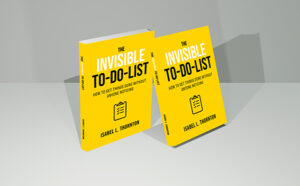Every financial decision involves some level of risk—whether you’re starting a business, investing in the stock market, or simply choosing a high-deductible insurance plan. But here’s the truth: managing risk well is not about avoiding it entirely. It’s about understanding your personal risk tolerance and making informed choices that support your financial goals and peace of mind.
What Is Financial Risk?
Financial risk refers to the potential for loss or uncertainty in your economic decisions. It can include:
- Investment volatility
- Income instability
- Unexpected expenses
- Market downturns
- Inflation erosion
While risk can’t be eliminated, it can be planned for, mitigated, and even used as a tool for wealth creation when approached wisely.
The Importance of Knowing Your Risk Tolerance
Risk tolerance is your emotional and financial ability to handle potential losses. It varies based on:
- Age and life stage
- Income stability
- Debt levels
- Financial goals
- Personal temperament
Understanding your comfort zone helps you avoid panic-driven decisions like selling during market dips or overspending out of fear of missing out.
Types of Risk Takers: Which One Are You?
1. Risk-Averse
You prioritize safety and security, often keeping your money in low-risk, low-return accounts. You may need to gently expand your comfort zone to allow your money to grow.
2. Balanced Risk-Taker
You’re open to risk, but only after doing your research. You likely diversify your investments and plan for downturns without overreacting.
3. High Risk-Tolerance
You’re comfortable with uncertainty and seek higher returns. While this can pay off, it’s important to keep a safety net and avoid reckless decisions.
How to Assess and Manage Financial Risk
✅ Step 1: Evaluate Your Finances
Do you have an emergency fund? What is your debt-to-income ratio? These are the foundational elements that determine how much risk you can afford.
✅ Step 2: Set Clear Financial Goals
Knowing what you’re aiming for—whether it’s early retirement, a home purchase, or debt freedom—helps guide your risk strategy.
✅ Step 3: Diversify Wisely
Don’t put all your eggs in one basket. Spread your investments across asset classes (stocks, bonds, real estate, etc.) to cushion potential losses.
✅ Step 4: Understand the Timeline
The longer your investment horizon, the more risk you can generally take. Short-term goals require more stability.
✅ Step 5: Educate Yourself
Knowledge reduces fear. Learn about the types of risks (market, inflation, liquidity, etc.) and how to protect yourself through hedging, insurance, and proper planning.
Managing Emotional Reactions to Risk
- Avoid acting on fear or hype—stick to your long-term strategy.
- Turn off the noise—daily news can trigger anxiety that leads to impulsive decisions.
- Work with a financial advisor or coach to keep emotions in check and strategy on track.
Risk Is Inevitable—But It Can Be Empowering
When managed thoughtfully, risk becomes a tool—not a threat. The key is to find your balance: enough risk to grow, but not so much that it keeps you up at night.
Want a deeper guide to aligning your risk tolerance with wealth-building strategies that support your values and lifestyle? My book, Building Wealth for a Better Life, offers practical steps for confident financial decision-making in any season.





